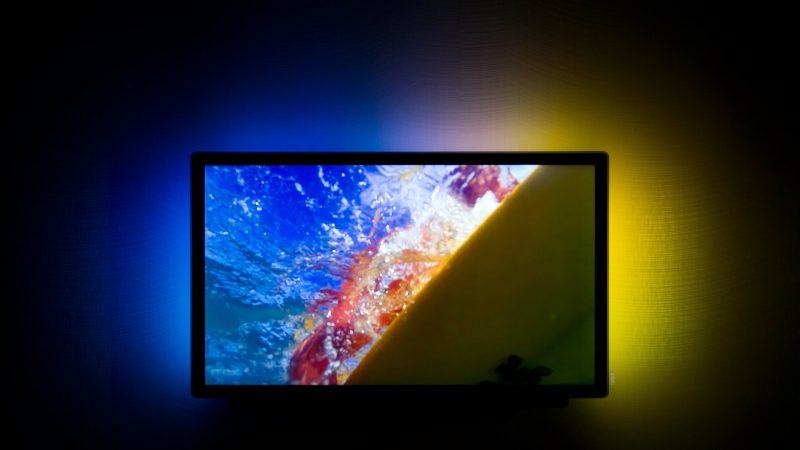As a child, you’ve probably heard Mom warn you against sitting too close to the TV screen. “It’ll ruin your eyesight”, she’d say. While staring at a computer or TV screen won’t cause permanent damage, it can cause eye strain which increases the chances of headaches and fatigue. To prevent this, you don’t have to spend less time in front of the TV or computer screen. Instead, invest in bias lighting. Here we break down everything you need to know about bias lighting and why it relieves eye strain and increase your viewing experience.
Why Do Screens Strain Our Eyes?

When you look at something, whether it be a cell phone screen, a painting on the wall, or the view from your bedroom window, your pupils dilate to modulate how much light enters your eyes. The extent to which your eye dilates is caused by the average amount of light your eyes can take in at a time; not by the brightest point of light. For example, when you watch TV or use a computer in a dark room, your eyes stare at this window of light that is surrounded by darkness. Your eyes perceive the screen to be extremely bright compared to the rest of the room, but they don’t adjust to the average level of brightness displayed on the screen. In other words, your eyes get tired from processing the bright light in a dark room, resulting in eyestrain. The symptoms of eyestrain include tension headaches, watery eyes, discomfort, temporary blurred or double vision, and “afterimages” when you look away from the screen.
You can prevent eye strain by watching TV or use a computer in a well-lit room; however, this takes away from your viewing experience as it can wash out the colors on the screen and creates a reflection. Plus, who wants to watch a scary movie with all the lights on? That’s no fun. That’s where bias lighting comes in.
What Is Bias Lighting?

Bias lighting refers to any light source that illuminates the area around the screen–a wall or surface behind the screen. They reach your eyes after bouncing off the walls. Therefore, it doesn’t shine light directly toward your eyes. The great thing is, you don’t have to purchase a whole new TV to get bias lighting. You can achieve bias lighting by placing a cheap lamp and 40-watt light bulb behind your TV. This is not only simple but cost-effective.
What are the Benefits of Bias Lighting?
Improved Image Quality

In addition to reducing eye strain, bias lighting enhances image quality by increasing the contrast on the screen. It works the same as an optical illusion. When you illuminate the wall behind your TV, the grays and blacks on the screen appear more vibrant, and the contrast between the picture on the surrounding area seems stronger.
Extends Life of TV’s Backlight
Many people adjust the brightness and contrast levels on their TV to help improve the picture quality, but doing this can quickly burn out the backlight in your TV or computer monitor. This could be saving you a few dollars as replacing a blacklight can cost anywhere from $40-85.
How to Set Up Bias Lighting
Choosing the Best Bias Lighting
First, it is important to select the type of bias lighting. Light bulbs have a color temperature listed on the Kelvin Color Temperature Scale. The higher the number, the cooler it is and the more blue light it has, whereas the lower the number, the warmer it is and the more red light it has. For example, candle flames are 1,900K and “daylight” light bulbs are about 5,000-6,500K. The best type of bias lighting that best improves picture quality along with relieving eye strain is that of 6,500K. The reason being is that the bulbs inside your TV or monitor are approximately 6,500K. Whether you use a light bulb, LED light strip, or tube light, ensure that it is close to 6,500K.
Installing Bias Lighting
There are many ways to install bias lighting. Like mentioned earlier, you can place a light bulb behind your TV for a quick and cheap solution, but there are many more ways to installing bias lighting. You can grab some LED puck lights and place them in the back of your TV. They’re simple to install and cost around $25. In addition, you can purchase an LED strip that you can easily place behind your computer monitor or television. If your TV is mounted, you can purchase a bias light strip that is thin enough to be installed behind the flat-panel. The Ideal-Lume Panelight would cost you $95, a bit more costly than the previously mentioned methods.
Bias lighting is affordable and so simple to install that is would be foolish to not invest in it. This simple writing system can make a world of a difference in your viewing experience and comfort.
